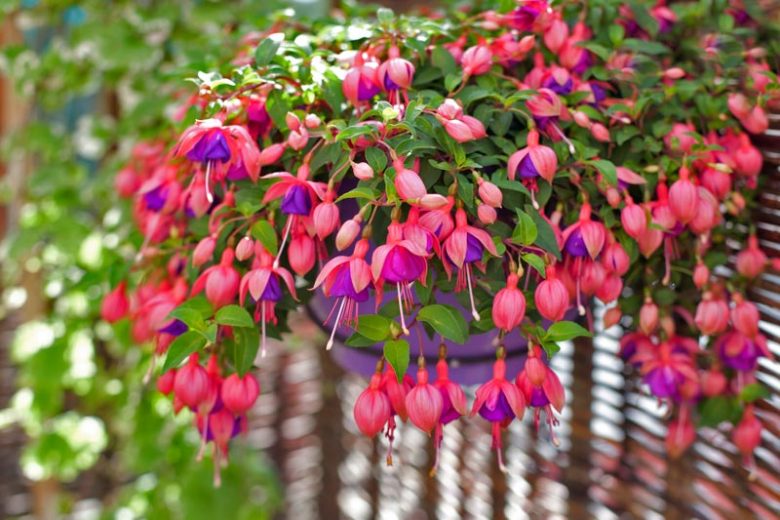Fuchsia (Fuchsia spp.)
Last updated: September 4,
2025
Care Sheet List
Known for their beautiful, bell-shaped flowers, fuchsias are popular as hanging basket plants. They are a tender perennial, often grown as an annual in colder climates, and are sensitive to heat and direct sun.
Lighting
Fuchsias prefer bright, indirect light or partial shade. They thrive with morning sun but need to be protected from the harsh afternoon sun, which can scorch their delicate leaves and cause flowers to wilt and drop.
Watering
Routine
The key to caring for fuchsias is to keep the soil consistently moist but not soggy. They are very thirsty plants, especially when grown in containers. Water thoroughly when the top 1 inch of soil feels dry. You may need to water daily during hot weather. Ensure good drainage to prevent root rot.
Fertilizer
Requirements
Fuchsias are heavy feeders. During the spring and summer growing season, fertilize every 2-4 weeks to encourage continuous blooming.
- Type: Use a balanced liquid houseplant fertilizer.
- Commercial Recommendation: Miracle-Gro Indoor Plant Food (Liquid) or Schultz Liquid Plant Food are good options. Dilute these commercial concentrates to achieve approximately 50-100 ppm N in your final solution. This is often equivalent to using them at "half strength" or "full strength" of the package's recommended dose.
- DIY Fertilizer Suggestion: For robust foliage growth, use your homemade 3-1-2 liquid fertilizer concentrate (High Nitrogen) or a balanced 1-1-1 liquid fertilizer concentrate.
- For 3-1-2 concentrate (30,000 ppm N): Apply at a "Light to Moderate Feeding" rate, using 1.67 ml to 3.33 ml per 1 liter of water (resulting in ~50-100 ppm N). See recipe details.
- For 1-1-1 concentrate (10,000 ppm N): Apply at a "Moderate Feeding" rate, using 10 ml per 1 liter of water (resulting in ~100 ppm N). See recipe details.
- Avoid: Do not fertilize in fall and winter.
Humidity and Temperature Requirements
Fuchsias prefer high humidity and cooler temperatures. They do best in temperatures between 60-70°F (15-21°C) during the day and a few degrees cooler at night. They will stop blooming when temperatures consistently rise above 75°F (24°C). Misting daily or placing a humidifier nearby will help.
Pot Size
and Soil Type
- Pot Size: When repotting, choose a container that is 1-2 inches larger in diameter. A well-draining pot with ample drainage holes is essential to prevent waterlogging.
- Soil Type: A well-draining, airy potting mix is crucial. A mix of potting soil amended with perlite, orchid bark, or coco coir will work well to provide good aeration and drainage.
Pruning
and Maintenance
- Pruning: To encourage a bushier plant and more flowers, pinch out the growing tips of new stems in the spring. Deadhead spent blooms regularly to promote continuous blooming throughout the season.
- Overwintering: In cold climates, fuchsias can be brought indoors before the first frost. Cut the plant back by about half, remove most of the leaves, and store it in a cool, dark place (45-55°F). Water sparingly, just enough to prevent the soil from drying out completely.
- Toxicity: While the berries of some fuchsia species are edible, the plant is generally considered toxic to pets and humans. It is best to keep them out of reach of children and animals.

